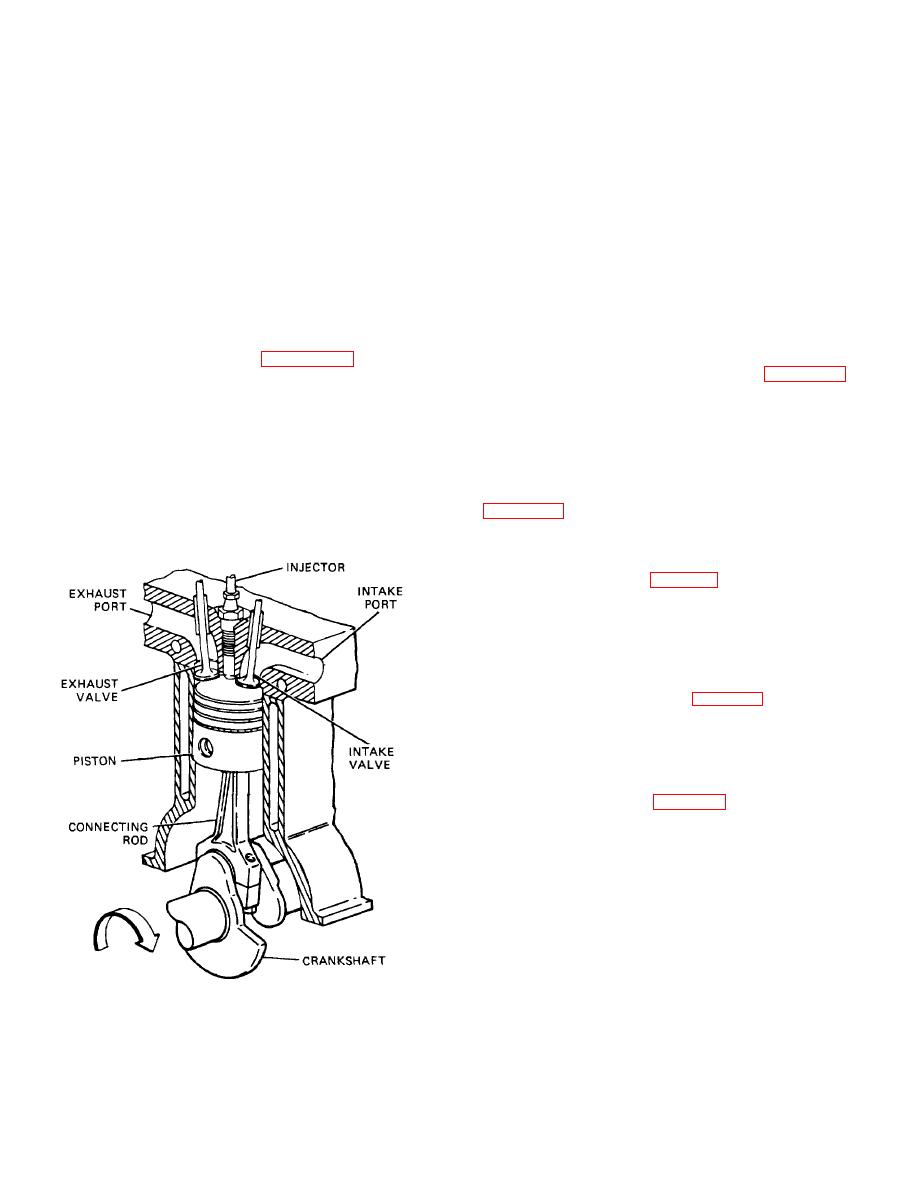
| Tweet |

Custom Search
|
|

|
||
 TM 9-8000
e. Advantage and Usage. The two-stroke cycle
(2) The fuel and air mixture is compressed to
about one-twentieth of its original volume in a diesel
engine is used almost exclusively in very small
engine. In contrast, the fuel and air mixture in a gasoline
equipment. It is lightweight and able to run at very high
engine is compressed to about one- eighth of its original
speeds due to the absence of a mechanical valve train.
volume. The diesel engine must compress the mixture
this tightly to generate enough heat to ignite the fuel and
2-13. Gasoline Engine Versus Diesel Engine.
air mixture. The contrast between the two engines is
shown in figure2-16.
a. General. In many respects, the four- stroke
cycle gasoline engine and the four-stroke cycle diesel
(3) The gasoline engine mixes the fuel and air
engine are very similar. They both follow an operating
before it reaches the combustion chamber. A diesel
cycle that consists of intake, compression, power, and
engine takes in only air through the intake port. Fuel is
exhaust strokes. They also share in the same system for
put into the combustion chamber directly through an
intake and exhaust valves. The component parts of a
injection system. The air and fuel then mix in the
diesel engine are shown in figure 2-15. The main
combustion chamber. This is illustrated in figure 2-17.
differences between gasoline engines and diesel engines
follow.
(4) The engine speed and the power output of
a diesel engine are controlled by the quantity of fuel
(1) The fuel and air mixture is ignited by the
admitted to the combustion chamber. The amount of air
heat generated by the compression stroke in a diesel
is constant. This contrasts with the gasoline engine
engine versus the use of a spark ignition system on a
where the speed and power output are regulated by
gasoline engine. The diesel engine needs no ignition
limiting the air entering the engine. This is illustrated in
system. For this reason, the gasoline engine is referred
to as a spark ignition engine and a diesel engine is
referred to as a compression ignition engine.
b. Operation.
(1) Intake (A, Fig. 2-19). The piston is at top
dead center at the beginning of the intake stroke. As the
piston moves downward, the intake valve opens. The
downward movement of the piston draws air into the
cylinder. As the piston reaches bottom dead center, the
intake valve closes. The intake stroke ends here.
(2) Compression (B, Fig. 2-19). The piston is
at bottom dead center at the beginning of the
compression stroke.
The piston moves up- ward,
compressing the air. As the piston reaches top dead
center, the compression stroke ends.
(3) Power (C, Fig. 2-19). The piston begins
the power stroke at top dead center. Air is compressed
in the upper cylinder at this time to as much as 500 psi
(3448 kPa). The tremendous pressure in the upper
cylinder brings the temper- ature of the compressed air to
approximately 10000F (5380C).
The power stroke
begins with the injection of a fuel charge into the engine.
The heat of compression ignites the fuel as it is injected.
The expanding force of the burning gases pushes the
piston downward, providing power to the crankshaft. The
power generated in a
Figure 2-15. The Four-Stroke Cycle Diesel
TA233318
2-10
|
||
 |
||